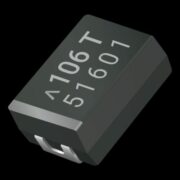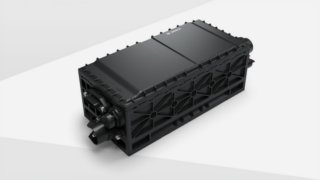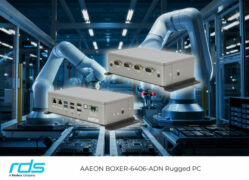While the electronics industry mostly uses 3D printing for prototyping, recent innovations have already found uses for this technology in the automotive and medical fields. The electronics industry is quickly learning that 3D printing is a powerful tool manufacturers can use to improve their output.
3D printing has plenty of benefits, most of which we see in the engineering and medical fields. However, 3D printing could also reshape the electronics industry as we know it.
What is 3D Printing?
3D printing involves several processes to create three-dimensional objects. It quickly produces plastic or metal prototypes as a manufacturer designs new parts.
People often purchase a 3D printer to print plastic figurines and mold patterns. Businesses and medical practitioners have also used these printers to make surgical implants, prosthetics, and steel machine parts.
At the heart of every 3D printing process is computer-aideddesign or CAD. With these programs, users can create or alter a three-dimensional computer model of the object they want to print. The computer then translates his model into a series of two-dimensional layers that the printer will print out and solidify based on these “slices”.
Benefits of 3D Printing
So how has 3D printing improved industries? What does it bring to the table for the electronics industry?
In-House Prototypes
The electronics industry is very competitive and fast-paced. Many parts of the development process are outsourced, which drags out the timeframe to receive results. On top of this, developers have to worry about intellectual property concerns and miscommunications.
3D printing allows for rapid prototyping, which moves the prototyping process in-house, which not only reduces these concerns but also cuts down on expenses. This can help manufacturers not only keep pace with the industry’s demands but innovate at a faster rate without worrying about IP infringement.
Faster Turnaround Times
By bringing the prototyping process in-house, engineers can work more efficiently while designing products. Rather than having to wait for contractors to get back to you with a prototype, you can print your prototype and have a third party validate the design in as little as a few days.
Quicker turnaround times give electronics manufacturers a competitive edge while also allowing for flexible manufacturing.
Design Flexibility
3D printing also gives designers the ability to create complex shapes and electronic components. Since these printers account for and stabilize non-traditional shapes, you could feasibly print prototypes that you previously wouldn’t be able to. You could potentially print multilayer circuits on non-flat, flexible surfaces.
Customized Products
By simplifying your overall supply chain, manufacturers can branch out into customized electronics. While custom electromechanical parts made by 3D printing are still new to the market, they have the potential to expand the market.
For example, Siemens Mobility recently used 3D printing to create a product for better sanitation measures with train door handles. These can be easily custom printed for the type of train and allows the company to replace the parts themselves instead of relying on another manufacturer.
With 3D printing, businesses can provide customers with on-demand services and produce high-demand products without other contractors. They can better stay on top of trends in the market and keep up with them. By keeping the design and pre-production processes simple, businesses can offer customized products without worrying about extra expenses.
Current Manufacturer Business Models
Tech companies tend to use service models for their flexibility and reduced costs. 3D printing is already transforming software-as-a-service (SaaS) models into manufacturing-as-a-service (Maas) models. MaaS may even be able to make practical electronic components ready for easy distribution and disposal.
What 3D Printed Electronics Are Available Now?
Companies are already seeing the benefits 3D printing has produced for the automotive, aerospace, and medical industries. A great example of its use is in orthopedic production with customized casts.
Neotech AMT currently produces conductors, semiconductors, resistors, and more with their combined CNC motion platform and 3D-capable print heads. Nano Dimension is also working on producing functional electronics prototypes, multi-layer Printed Circuit Boards, and radio frequency amplifiers with Harris Corp.
The company Sculpteo has been producing custom parts for small-scale solar energy products their customers work on. And Optomec has begun printing embedded electronics at the micron scale for their Aerosol Jet Technology.
In all of these areas, 3D printing typically as an additive function. However, the technology has the potential to print fully functional electronic components.
The Future of 3D Printing in the Electronics Industry
While manufacturing prototypes is the most common application of 3D printing in the electronics industry, it has the potential to be the standard method of producing high-tech materials. 3D printed sensors can create lenses for augmented reality applications. We could even feasibly 3D print fully-functioning smartphones with only additive manufacturing.
Altogether, 3D-printed materials have the potential to make our technology more functional, disposable, and lightweight.
Improvements to be Made
Before the industry moves towards these advanced applications, 3D printing needs to become more sophisticated. 3D design software needs to develop to properly print electronic components inside another part with better accuracy. 3D printing software also needs to advance so companies can feasibly print nanometer parts for delicate software.
Aside from improvements, 3D printers also need to change how they think about electronic components. 3D printing technology encourages designers to think out of the box, which could lead to the reconception of circuit boards, electronic components, and enclosures to make them more environmentally friendly and easier to build.
Summary
3D printing is full of potential and already brings a lot to the table for the electronics industry. But much of this new technology is still in its infancy and needs to be improved before it can seriously shake up the market. Despite these challenges, 3D printing has already evolved a lot over the years.
The medical and automotive fields have already made huge headway in their 3D printing applications. As new players enter the tech industry, and as 3D printing continues to evolve, we could see 3D printing move from being a prototyping tool to an end product manufacturer.
About the author:
Roger Liucci is a senior BIM Specialist at Microsol Resources, an Autodesk Gold Partner in their New York office. He has provided BIM implementation, support, and training to architectural, engineering, and construction firms for over 20 years. Roger is particularly interested in the interaction between design and technology innovation as it relates to digital fabrication and cloud computing. Among his software specialties include Autodesk Revit, Navisworks, 3ds Max Design and Rhino.
Roger studied Environmental Architecture at Arizona State University. He has given talks on building information modeling and technology innovation at Autodesk University, AIA seminars, and the Revit User Group.










